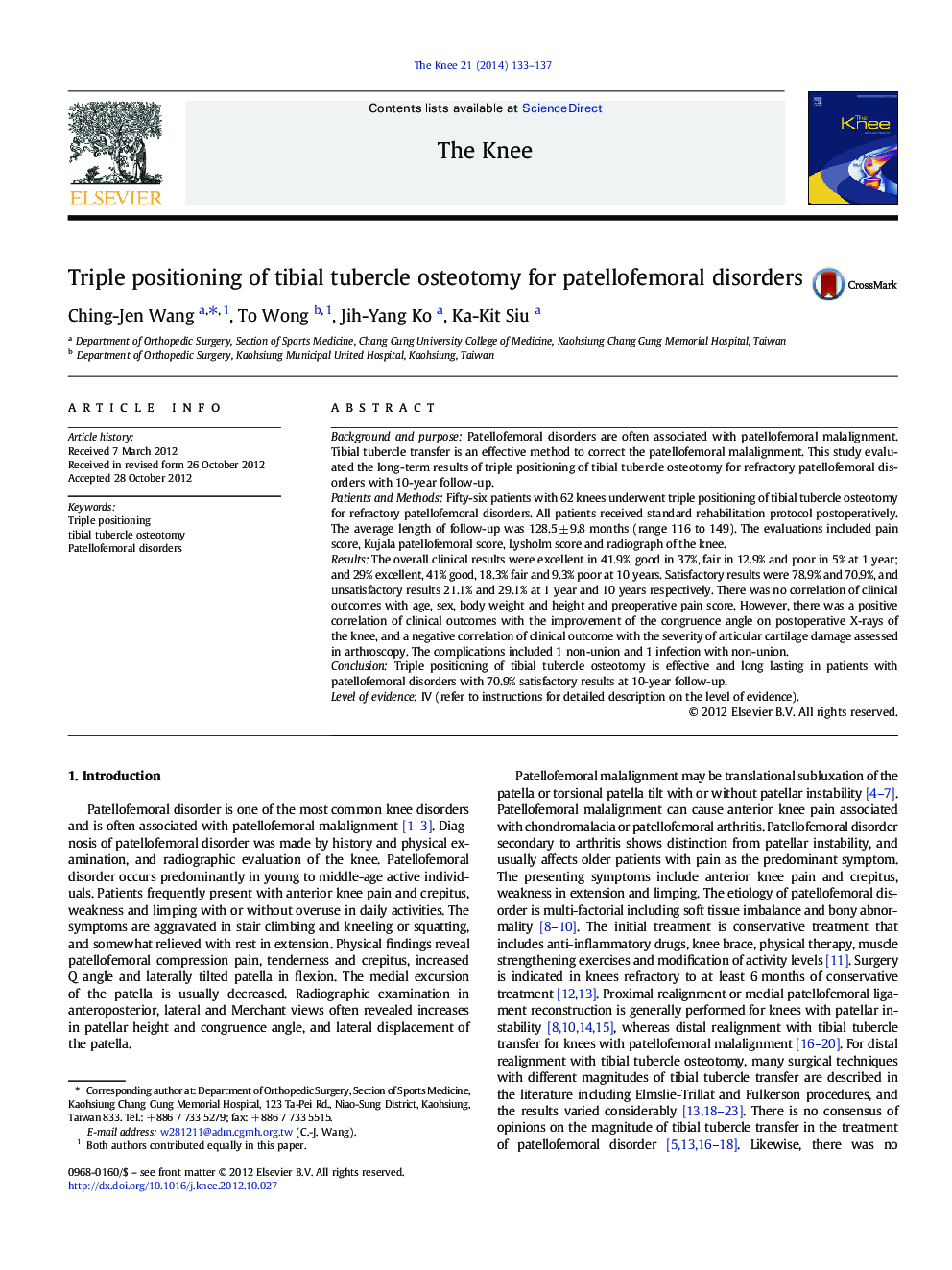| Article ID | Journal | Published Year | Pages | File Type |
|---|---|---|---|---|
| 6211232 | The Knee | 2014 | 5 Pages |
Background and purposePatellofemoral disorders are often associated with patellofemoral malalignment. Tibial tubercle transfer is an effective method to correct the patellofemoral malalignment. This study evaluated the long-term results of triple positioning of tibial tubercle osteotomy for refractory patellofemoral disorders with 10-year follow-up.Patients and MethodsFifty-six patients with 62 knees underwent triple positioning of tibial tubercle osteotomy for refractory patellofemoral disorders. All patients received standard rehabilitation protocol postoperatively. The average length of follow-up was 128.5 ± 9.8 months (range 116 to 149). The evaluations included pain score, Kujala patellofemoral score, Lysholm score and radiograph of the knee.ResultsThe overall clinical results were excellent in 41.9%, good in 37%, fair in 12.9% and poor in 5% at 1 year; and 29% excellent, 41% good, 18.3% fair and 9.3% poor at 10 years. Satisfactory results were 78.9% and 70.9%, and unsatisfactory results 21.1% and 29.1% at 1 year and 10 years respectively. There was no correlation of clinical outcomes with age, sex, body weight and height and preoperative pain score. However, there was a positive correlation of clinical outcomes with the improvement of the congruence angle on postoperative X-rays of the knee, and a negative correlation of clinical outcome with the severity of articular cartilage damage assessed in arthroscopy. The complications included 1 non-union and 1 infection with non-union.ConclusionTriple positioning of tibial tubercle osteotomy is effective and long lasting in patients with patellofemoral disorders with 70.9% satisfactory results at 10-year follow-up.Level of evidenceIV (refer to instructions for detailed description on the level of evidence).
